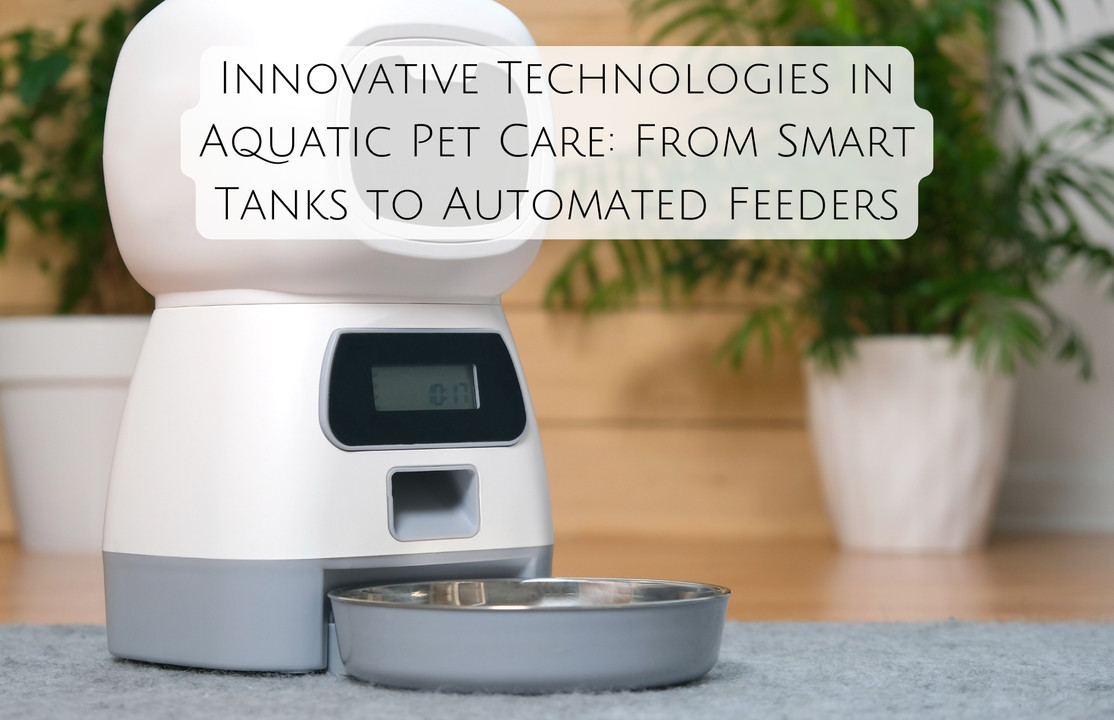Innovative Technologies in Aquatic Pet Care: From Smart Tanks to Automated Feeders
Aquatic pet care has been transformed by technology, making it easier for fish keepers to monitor and maintain their tanks, ensure their fish are fed on schedule, and optimize the health and happiness of their aquatic pets. With advanced solutions like smart tanks, automated feeders, and sensors that monitor water quality, technology has revolutionized the way we care for our underwater friends. Here’s a look at the latest innovations in aquatic pet care and how they’re enhancing the experience for hobbyists and professionals alike.
Smart Aquariums: The Next Generation of Fish Tanks: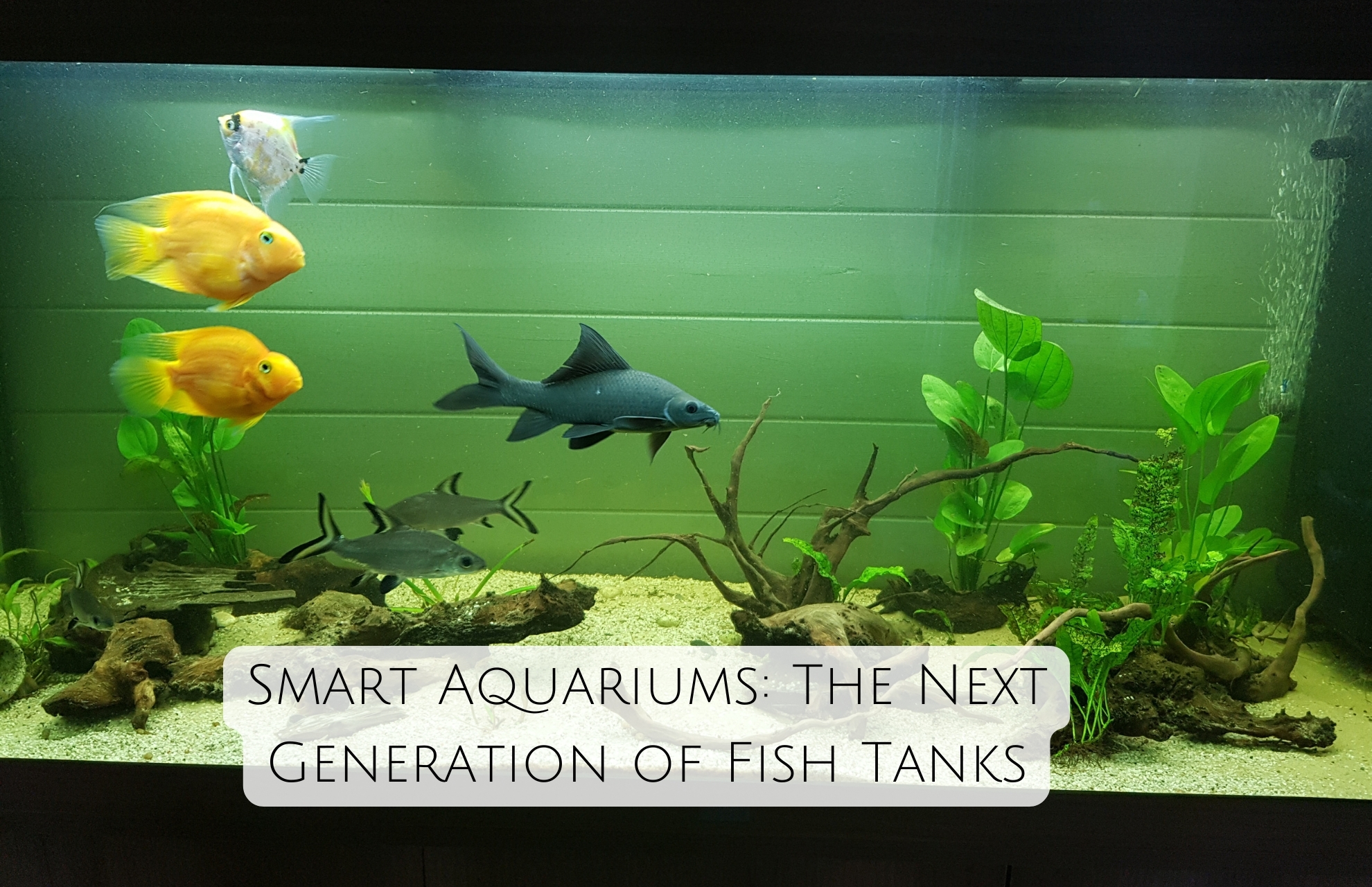
Smart tanks are aquariums with built-in sensors, Wi-Fi connectivity, and automated controls that allow for remote monitoring and management. By syncing with a smartphone or computer, these tanks provide real-time insights into water conditions, lighting, and even the behavior of your fish.
- Water Quality Monitoring: Many smart tanks come equipped with sensors to monitor pH, ammonia levels, temperature, and nitrate levels. Maintaining these parameters is crucial for fish health, and smart tanks send alerts if any parameter falls outside safe levels. This can prevent common issues like algae blooms or fish stress due to sudden temperature changes.
- Automated Lighting: Lighting is key for aquarium aesthetics and helps support live plants and coral. Smart tanks enable owners to program custom lighting schedules, mimicking natural daylight cycles. Some models even offer color-adjustable LED lighting, allowing for visually stunning displays and adjusting light intensity based on tank conditions.
- Remote Access and Control: One of the most exciting features of smart tanks is the ability to manage the aquarium from anywhere. If you’re away from home, you can adjust temperature or lighting levels through an app and receive alerts about any irregularities.
Popular Products: Brands like GloFish and Fluval offer smart tanks that sync with mobile apps, while Fishbit and Seneye provide high-tech water quality monitors that can be added to existing tanks.
Automated Fish Feeders: Precision Feeding Made Easy: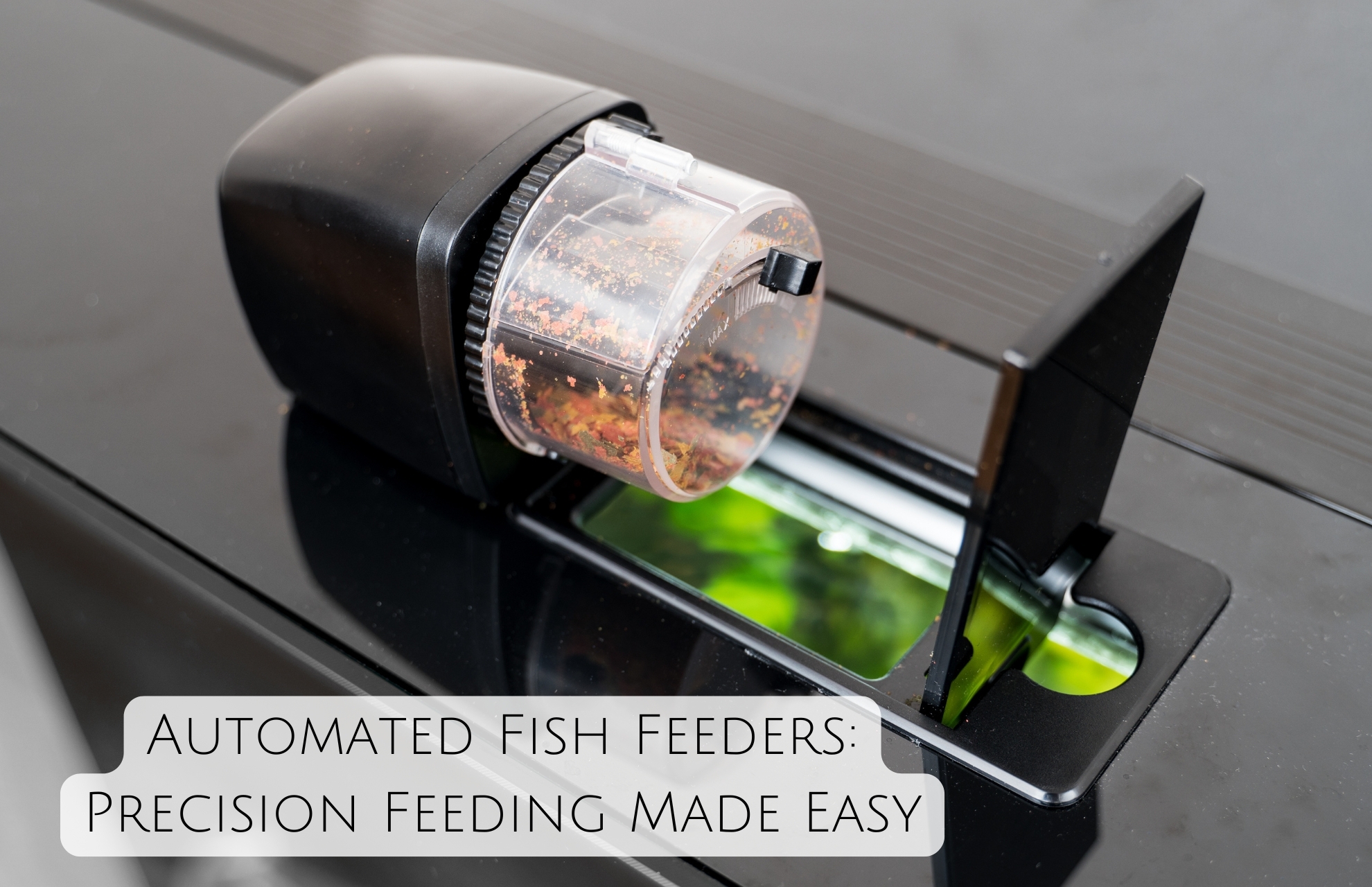
Automated feeders have become a staple for aquarium enthusiasts, ensuring fish are fed consistently even when their owners are busy or away. These devices can be programmed to dispense specific amounts of food at scheduled times, reducing the risk of overfeeding or underfeeding.
- Portion Control: Automated feeders can precisely dispense food according to species and tank size. Many models allow for different feeding frequencies, ideal for species with specific dietary needs, such as herbivorous fish that graze throughout the day or nocturnal fish that prefer evening feedings.
- Variety and Customization: Advanced feeders offer compartments for different types of food—flakes, pellets, and freeze-dried options—so fish can enjoy a diverse diet. Some feeders even allow owners to customize feeding patterns, useful for mixed-species tanks where different fish have unique dietary requirements.
- App Integration: High-end feeders can connect to apps for real-time control, making it easy to adjust feeding schedules or check feeding history. This feature is particularly useful for aquarists who want to monitor feeding patterns and ensure their fish are eating properly.
Popular Products: The Eheim Everyday Fish Feeder and the Fish Mate F14 are popular choices, offering both customization and ease of use. For app integration, the FISHUU smart feeder is a top pick.
Water Condition Sensors: Keeping the Ecosystem Balanced: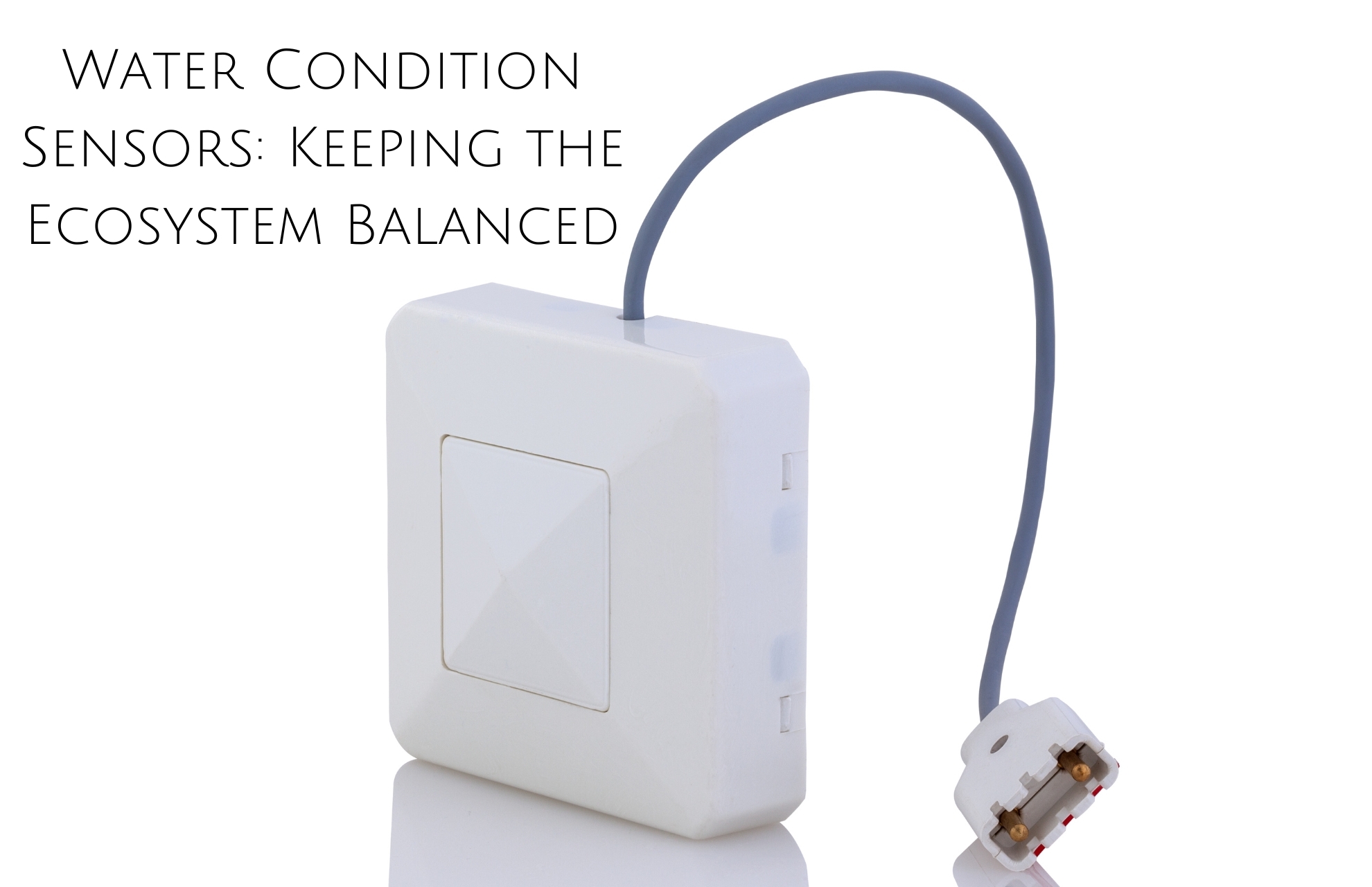
Water quality sensors are crucial in ensuring a balanced and healthy tank environment. They provide data on parameters like pH, temperature, ammonia, nitrite, and nitrate levels, which are essential for fish and plant health.
- Multi-Parameter Monitoring: Modern water sensors provide continuous real-time data on multiple parameters, preventing dangerous spikes that can lead to fish illness or plant die-off. Regular monitoring also ensures that water changes and chemical adjustments are done only when necessary.
- Automatic Alerts: Many water sensors come with automated alert systems that notify the owner if any parameter reaches a dangerous level. This is invaluable in preventing emergencies, as it allows for timely intervention before conditions worsen.
- Automated Water Conditioners: Some high-tech setups pair with automated systems that can add water conditioners or adjust pH levels automatically, maintaining optimal conditions with minimal user input.
Popular Products: Seneye Reef and Fishbit are highly regarded for offering comprehensive monitoring, with features that provide updates via smartphone and adjust conditions to help prevent common issues.
Self-Cleaning Systems: Simplifying Maintenance: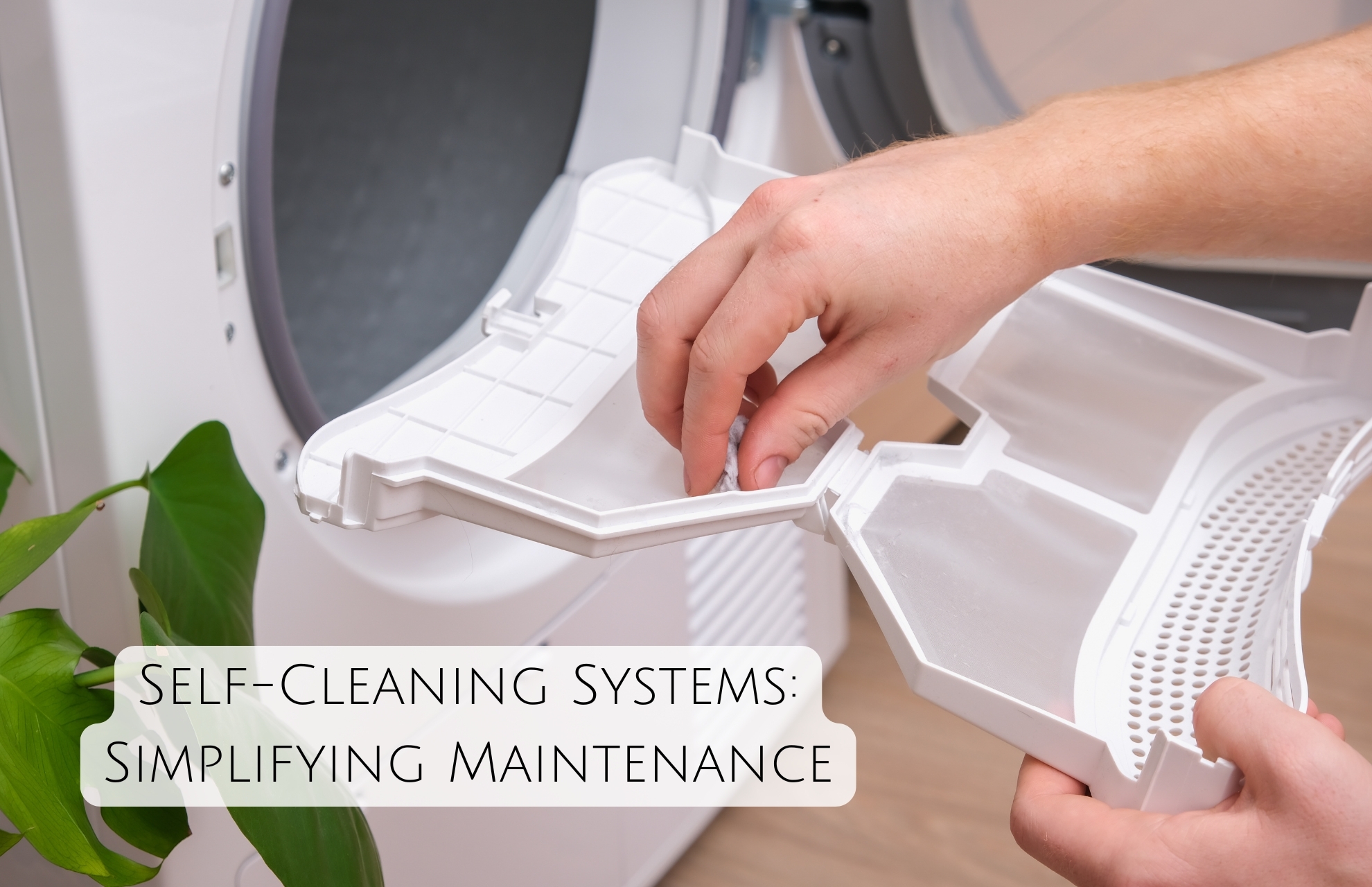
One of the most time-consuming aspects of aquarium care is cleaning, but self-cleaning aquariums simplify this task by automatically removing debris and maintaining clear water.
- Filtration and Debris Removal: Self-cleaning tanks are equipped with advanced filtration systems that remove waste, food particles, and debris, keeping water clear and odor-free. Some self-cleaning tanks even have built-in siphons that remove waste from the substrate, reducing the need for manual cleaning.
- Algae Control: Algae buildup is a common issue in aquariums, but self-cleaning tanks use UV sterilizers or specialized lighting that inhibits algae growth, minimizing cleaning requirements and keeping tanks looking pristine.
- Minimal Water Changes: By maintaining cleaner water, these systems reduce the frequency of water changes, making aquarium care more manageable. For busy owners, this feature is a game-changer, as regular water changes can be labor-intensive.
Popular Products: The EcoQube and BiOrb aquariums are popular self-cleaning models. They come with efficient filtration and LED lighting designed to reduce algae growth, making them low-maintenance options for fish enthusiasts.
Artificial Intelligence and Machine Learning: Personalized Aquarium Care: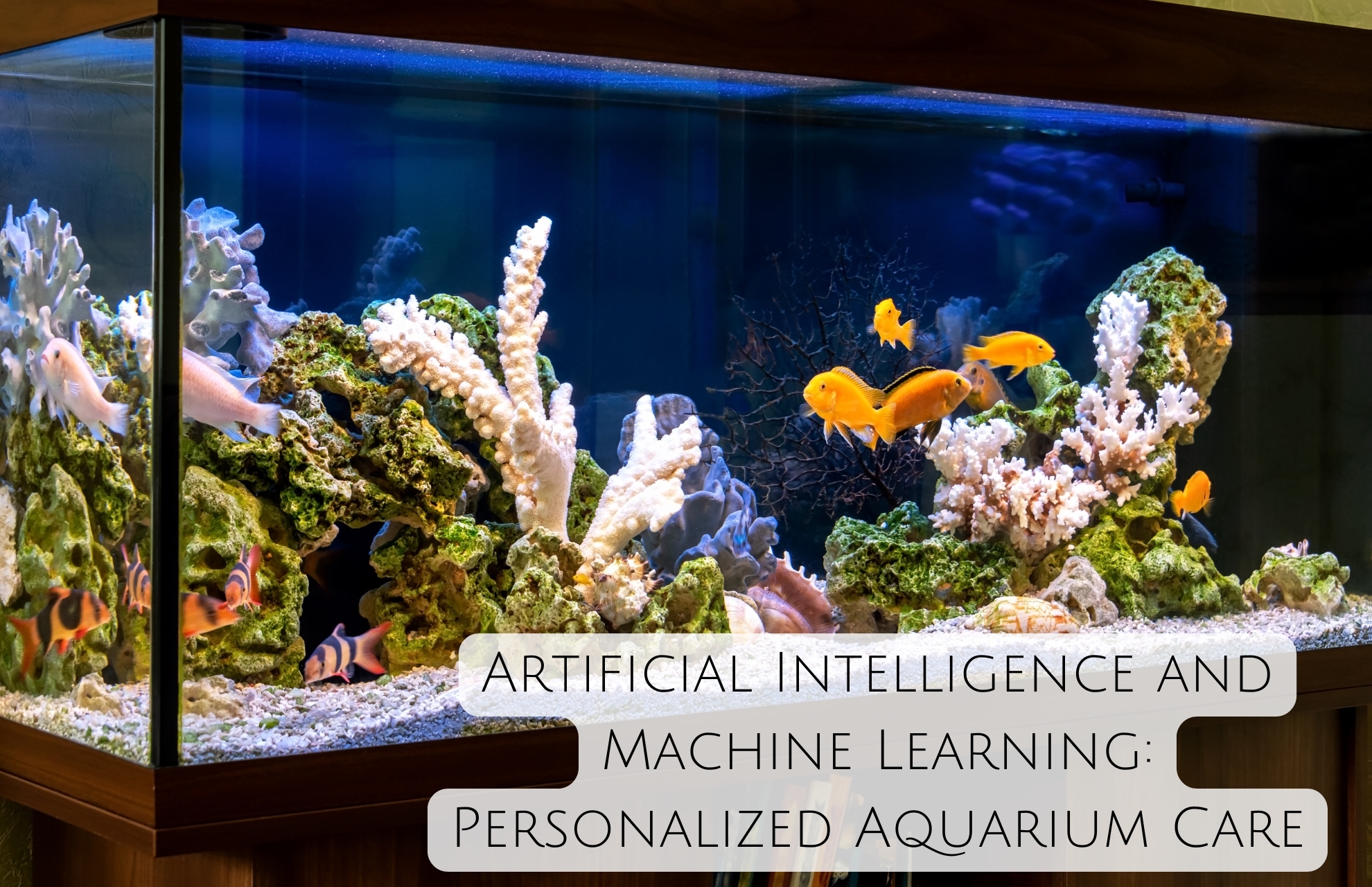
The most advanced smart aquariums now incorporate AI and machine learning to tailor tank conditions based on fish species, tank size, and environmental data.
- Adaptive Systems: AI-powered systems analyze data over time, learning patterns and predicting necessary adjustments to maintain optimal conditions. For example, if temperature fluctuates due to seasonal changes, the system can automatically adjust heating levels.
- Fish Health Monitoring: Some AI-based systems can monitor fish behavior and identify potential health issues. By tracking movement patterns, feeding habits, and interactions, these systems can alert owners to abnormalities early on.
- Custom Recommendations: Machine learning algorithms can provide tailored advice on water quality, cleaning schedules, and feeding routines, helping aquarium owners optimize care based on the unique conditions in their tank.
Popular Products: Products like Fishbit and AI-powered assistants such as MoAI provide real-time feedback and recommendations, adapting to each tank’s unique ecosystem to create a balanced environment.
Interactive Features: Building Bonds with Your Fish: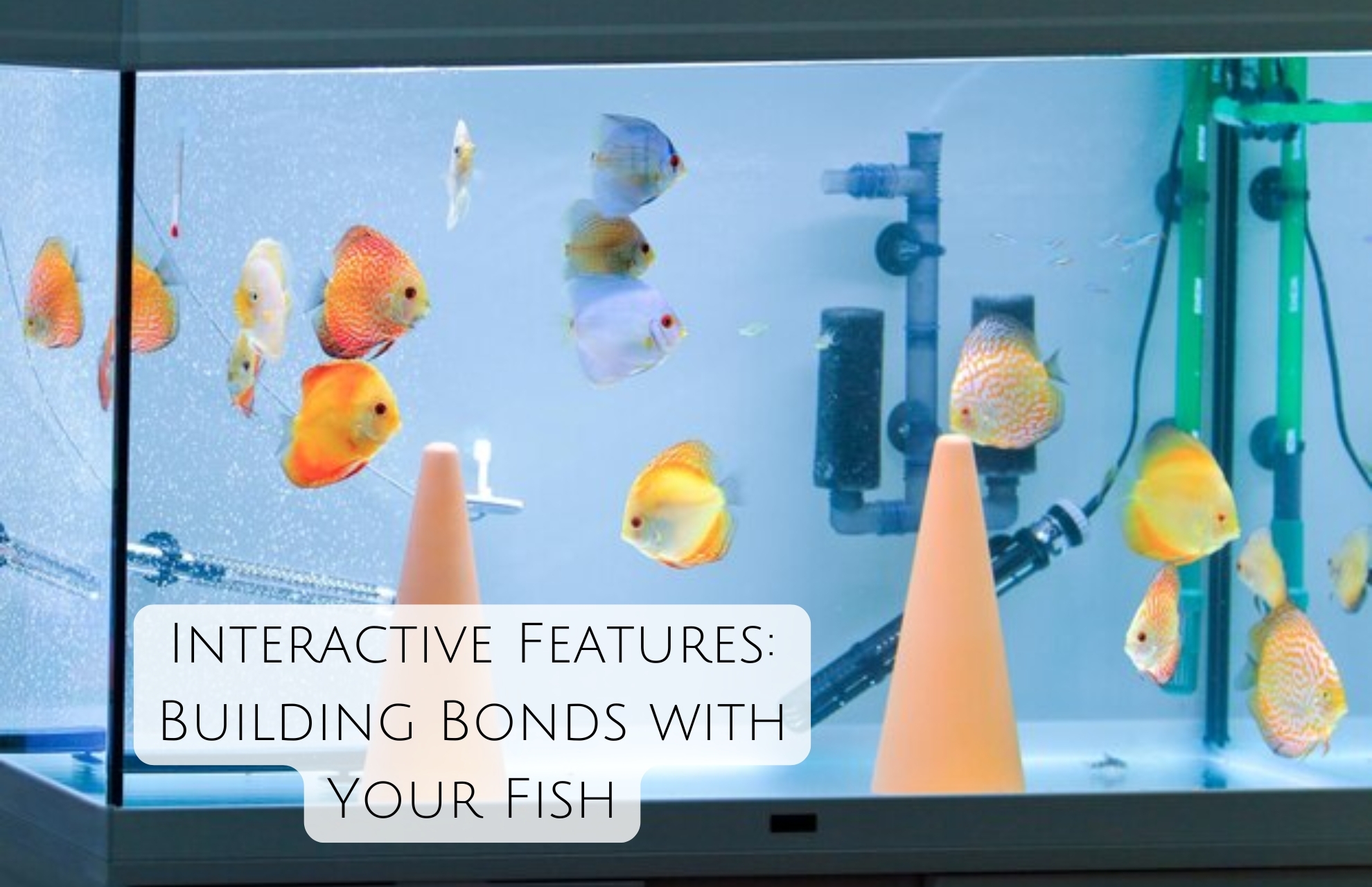
Technology now offers ways for fish keepers to engage and bond with their pets in more interactive ways. From apps that let you play with your fish to intelligent lighting and soundscapes, these innovations add a new dimension to aquarium enjoyment.
- Interactive Lighting: Some smart tanks come with lighting that responds to sounds or movements outside the tank, allowing owners to create interactive experiences for their fish. These lights can mimic the natural environment, enhancing the aesthetics of the tank and offering stimulation for certain species.
- Feeding Apps: Apps linked to automated feeders allow owners to initiate feeding at any time, offering a more engaging experience with their pets. This feature is useful for training fish to respond to feeding times and can create a bonding experience as fish recognize when food is coming.
- Aquarium Cameras: Some tanks now come with built-in cameras, letting owners check in on their fish from anywhere. This feature is ideal for those who spend time away from home but want to keep an eye on their pets’ well-being.
Popular Products: Interactive fish tanks like the RoboFish Aquarium and Wyze Cam Aquarium setup allow for remote interaction, offering a mix of high-quality visuals and control.
The Future of Aquatic Pet Care Technology:
Innovative technologies in aquatic pet care have redefined how we care for and interact with our underwater pets. As new advancements emerge, we can expect even more personalized, efficient, and engaging ways to manage aquariums and ensure the health of our fish. By combining sensors, automation, and AI-driven insights, today’s aquarists can create ideal aquatic environments with ease. For both hobbyists and professionals, these technologies represent a leap forward, blending convenience with a deeper understanding of aquatic ecosystems and enhancing the overall experience of keeping aquatic pets.
Latest Blogs
Traveling with Your Dog: Essential Supplies for Safe Adventures
Traveling with your dog can be an incredibly rewarding experience, whether you’re heading to a new c...
Understanding Blade Angles: How They Affect Performance and Usage
Blade angle, often referred to as "bevel angle," plays a critical role in the efficiency and versati...
The Best Power Tools for Home Renovation: A Comprehensive Guide
Embarking on a home renovation project is exciting, but it’s also a big undertaking that requires th...
Tech in the Garden: The Rise of Smart Gardening Tools
Gardening has traditionally been a relaxing, nature-centric hobby, but with recent advancements in t...
Tech in the Garden: The Rise of Smart Gardening Tools
Gardening has traditionally been a relaxing, nature-centric hobby, but with recent advancements in t...
Security Lighting and Motion Detectors: An Underrated Defense Mechanism
When it comes to home security, many people focus on locks, alarms, and surveillance cameras. Howeve...

